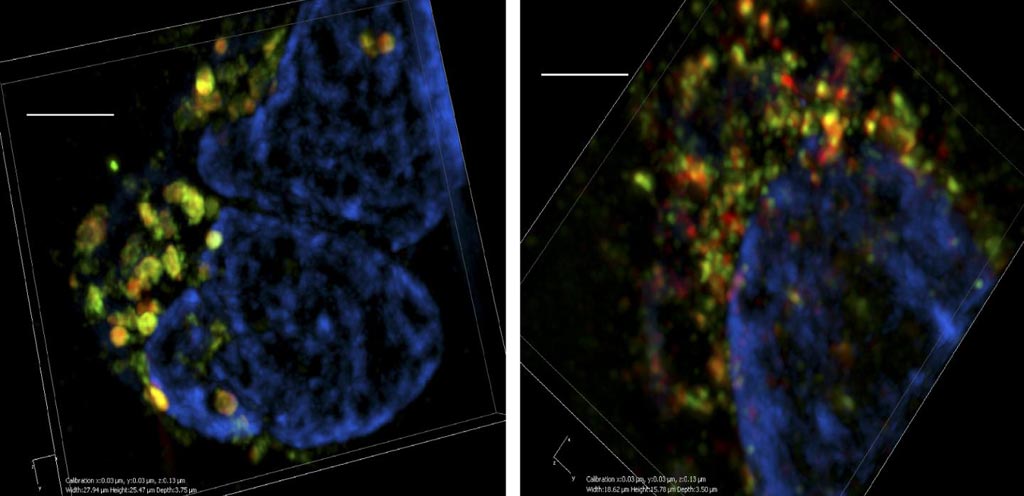Enzyme Elimination Blocks Exosome Release and Slows Cancer
By LabMedica International staff writers
Posted on 04 Jul 2018
Cancer researchers identified a molecular mechanism that enables aggressive cancer cells to manufacture and secrete large numbers of exosomes, which are critical for cancer progression and spreading.Posted on 04 Jul 2018
Exosomes are cell-derived vesicles that are present in many and perhaps all biological fluids, including blood, urine, and cultured medium of cell cultures. The reported diameter of exosomes is between 30 and 100 nanometers, which is larger than low-density lipoproteins but much smaller than red blood cells. Exosomes, which contain RNA, proteins, lipids, and metabolites that are reflective of the cell type of origin, are either released from the cell when multivesicular bodies (MVBs) fuse with the plasma membrane, or they are released directly from the plasma membrane. Exosomes have specialized functions and play a key role in coagulation, intercellular signaling, and waste management.

Image: Three-dimensional super-resolution microscopy shows that breast cancer cells (left) contain many large multivesicular bodies (green and red) that are full of exosomes ready to be released from the cell. In the absence of Munc13-4 (right), multivesicular bodies are much smaller and incapable of releasing their contents (Photo courtesy of Messenger et al., 2018).
Cancer cells secrete copious amounts of exosomes, and elevated intracellular calcium ions (Ca2+) are critical for tumor progression and metastasis, but the underlying cellular mechanisms are unknown. Munc13-4 is a member of the UNC13 family of proteins, which appears to play a role in vesicle maturation during exocytosis and is involved in regulation of cytolytic granules secretion. Munc13-4 is a Ca2+-dependent receptor and Rab-binding protein that is required for Ca2+-dependent membrane fusion. Rab GTPases regulate many steps of membrane trafficking, including vesicle formation, vesicle movement along actin and tubulin networks, and membrane fusion.
Investigators at the University of Wisconsin (Madison, USA) reported in the June 21, 2018, issue of the Journal of Cell Biology that acute elevation of Ca2+ in cancer cells stimulated a fivefold increase in exosome release that was eliminated by Munc13-4 knockdown and was not restored by Ca2+ binding–deficient Munc13-4 mutants.
Depletion of Munc13-4 in highly aggressive breast carcinoma MDA-MB-231 cells reduced the size of multivesicular bodies, indicating a role for Munc13-4 in MVB maturation. Munc13-4 used a Rab11-dependent trafficking pathway to generate MVBs competent for exosome release. Furthermore, depletion of Munc13-4 reduced the release of MT1-MMP-containing exosomes from breast cancer cells and slowed metastasis by inhibiting the cells' ability to degrade the extracellular matrix.
"Overall, we think that increased expression of Munc13-4, combined with elevated calcium levels, drives enhanced exosome release by highly aggressive cancer cells, and that Munc13-4 is a potential target for therapeutic intervention," said senior author Dr. Thomas F.J. Martin, professor of biochemistry at the University of Wisconsin.
Related Links:
University of Wisconsin













